I’d like to recommend a beautiful grouper. It’s been in our refrigerator for twenty days, says the maître, and we leave the table, appalled. In the recent future, instead, these words could be welcomed with sincere enthusiasm. Hear this: «Is fish better when it’s fresh? Today we can say it’s not. Or at least not necessarily». This statement may sound absurd, but if the person saying this is José Carlos Capel, one of the best food critics in Spain, one should pay attention. The quote comes from the latest edition of Madrid Fusión. And recalls one of the most interesting aspects analysed during the food congress, of which Capel is the curator. Because – again in his words - «here we open a new frontier, which can say and do a lot».
The basic concept is treating fish like meat. With regards to the ageing process of the latter, «this has been discussed for years. As for fish, we’re far behind, at a starting point. It’s a bit like when syphons first arrived in the kitchen», said Dani García, ex tri-starred chef – by choice, as we explained here Goodbye three stars, I want to be happy - while he was on stage in Madrid with one of the global points of reference of fish ageing: Australian Joshua Niland, born in 1988, with previous experience at Fat Duck with Heston Blumenthal. Since 2016 he’s patron-chef at Saint Peter, seating 34 people in Sydney, as well as of the delicatessen next door, called Fish Butchery.
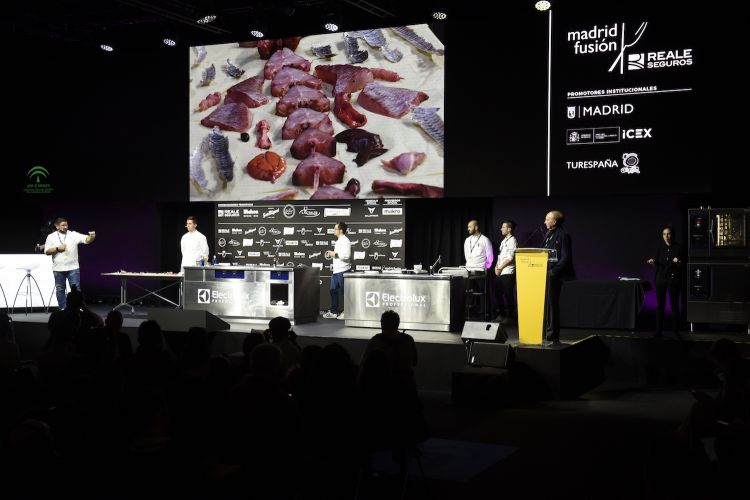
Niland with Dani García on the stage of the congress in Madrid
He says: «My work is finding the time of ageing when the fish reaches the best possible flavour; of course, this depends on the variety and the size». With these techniques he manages to preserve fish for up to a month; and, please note this is not dried fish. Instead, it’s a fish that has preserved all its juices; it has preserved all the essential features of fresh fish, with a texture that is only slightly thicker; and in which the flavour is simply concentrated, enhanced, but not changed. A super-fish, we could say. After all, who would eat a rib steak from an animal that was just killed? A little ageing is essential, not to count the long ageing process that are now very fashionable. The same principle applies to fish.
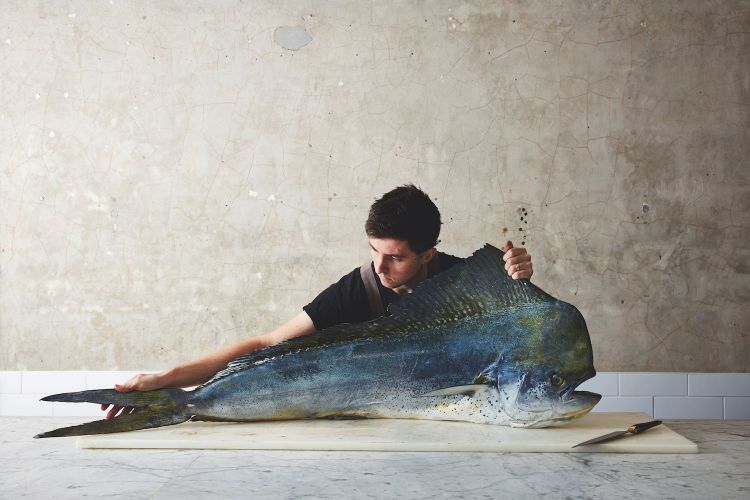
The Australian chef at work
Continuing the parallel: «Who of you would preserve a steak in ice?», Niland asks. That is to say, this gesture is commonly considered absurd. It’s the same with fish. There’s more: «The first enemy of fish ageing is indeed humidity». The Australian chef has been researching and experimenting the process for years. With some fundamental points: 1) when a fish is caught and gets out of the water, it must no longer touch it, whether in the form of solid, liquid or gas. 2) For the fish to age correctly, you must create the right bacterial environment. 3) The fish must not be handed, to prevent any undesired bacterial contamination. 4) Every problem – starting from the smell that always comes when the fish is not fresh – derives from a bad temperature and from the presence of water, in which uncontrolled bacteria develop. The thesis is that if you follow these rules, «the logic by which we approach this food changes». The best fish to eat is no longer the freshly caught one, but the one that has reached its right ageing point.
The technique – which «only works with fish over 800-900 grams in weight. For smaller fish it’s too complicated» - first of all requires that you remove the scales, because humidity hides between them, as well as the more superficial layer of skin, «the one that gives fish its colour. If you remove these parts, you can preserve the fish for days and days». Basically, with great skill using a knife, you must remove the scales and the external skin gradually cutting stripes that will not ruin the skin itself, because this will help during the ageing by preserving the meat. After that, you carefully remove the internal organs, and then dry everything with kitchen paper.
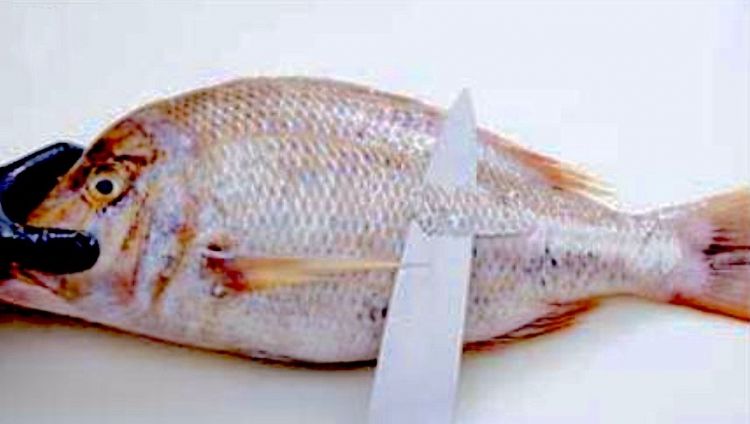
The technique to remove the scales and the external part of the skin
At this point, after removing scales, blood and internal organs, the fish is hanged with a hook in a room at a temperature between 0 and -2°C, with no ventilation and minimum humidity. In these conditions it can age for up to a month: the perfect ageing depends on the type of fish and its weight. At that point it will have an incredible aroma. «The goal is to find the best possible flavour of the fish. Our method preserves its characteristics for days. Of course, the meat is stronger, thicker, but it’s not flaccid because it’s still juicy». The drying only happens on the outside, not the inside.
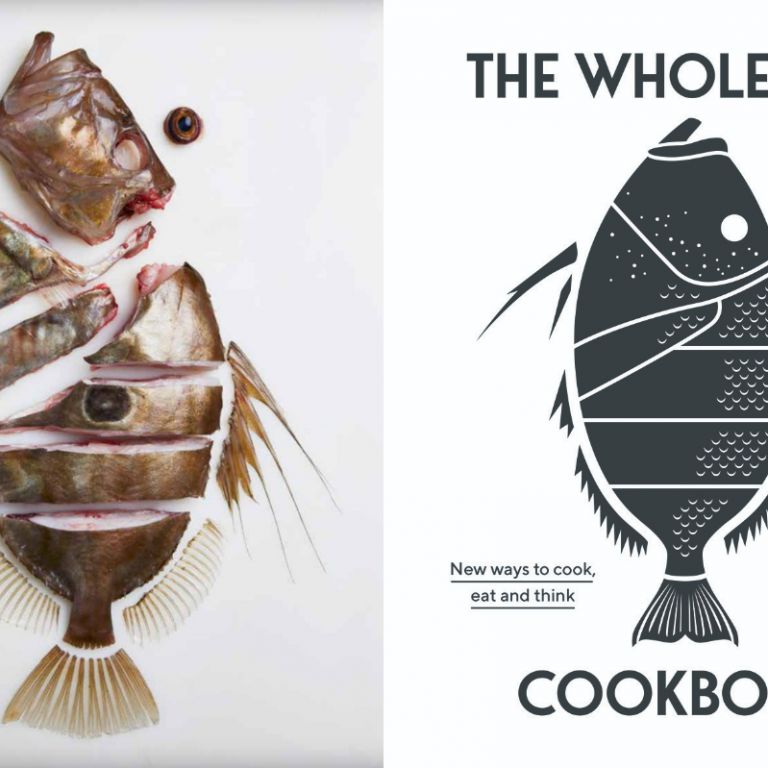
The cover of The Whole Fish Cookbook, the book from Niland in which he explains his techniques
Fish treated like meat, as we said. In particular, like pork: you won’t throw away anything. The ageing process designed by
Niland allows to use the whole animal. «These days on average we throw away 55% of the fish. We cannot go on like this». How can you use the parts that are usually considered waste? The chef says: «The eyes, mushed, are dehydrated and fried; the liver becomes a terrine or pâté, even in the style of a foie gras, and we sell it at the
Fish Butchery, as if it were duck or chicken pâté; the heart is cut and grilled; the spleen can also be grilled, or salted or even smoked to make something like
katsuobushi; the tongue is cooked like
kokotxas [the cod cheeks typical of Basque cuisine]; the stomach is marinated for seven days and then steamed for 8 hours resulting in a flavour similar to pork feet». The chef confesses he still hasn’t found a way of using the gall-bladder. But the use of every part also includes the scales and the membrane removed at the beginning, «which are fried and caramelised as a snack, or even a dessert».
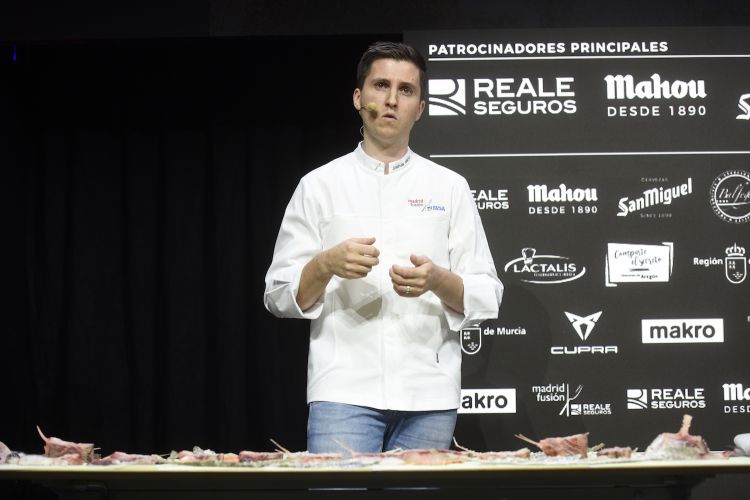
Niland on the stage of Madrid Fusión. On the table in front of him, all the parts of the fish. He uses 90% of the entire animal
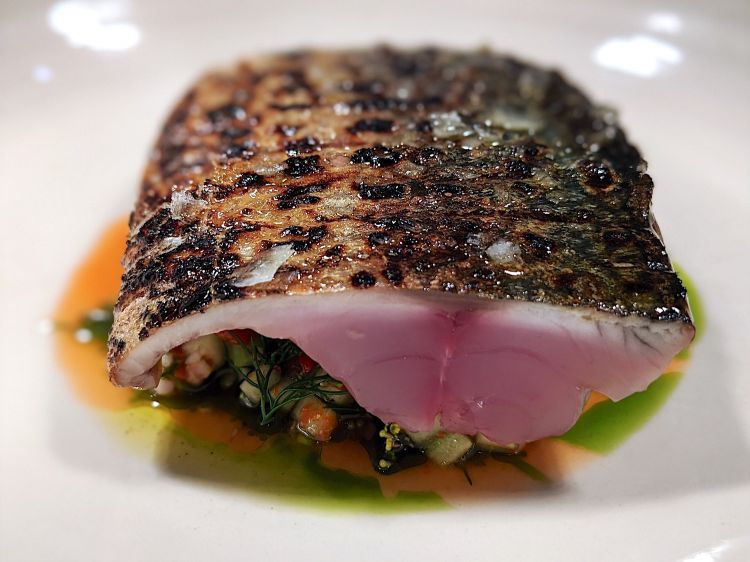
A dish from Niland at his Saint Peter in Sydney: it’s Grilled Blue mackerel from Ulladulla, glazed with a caramel of heart of mackerel, cucumber, shallot oil and salty chilli pepper
Almost no waste: under 10%. «We now use only half of the fish. If we learn to use almost everything, we can fish less, and preserve the fish reserves and avoid excessive exploitation. It’s basically also a sustainable process». A restaurant will no longer need to go in a frantic search of fish from the day’s catch, throw the waste and then having to get rid of the unsold fish (or freeze it); but they can have a "fresh" aged product, counting on a set number of days when the flavour will be better and better.
As chef Koji Kimura, of Sushi Kimura in Tokyo said always at Madrid Fusión - he’s another master of fish ageing, but following Japanese techniques: «It is true that the flavour of the fish is influenced by its freshness and by how it was killed on the boat; but the most important element is in fact how you treat it after cleaning it. It’s at that moment that an evolution in the nuances of flavour and of texture begins». Kimura’s technique differs from Niland’s because of the way it’s processed (he basically removes the blood, rubs the fish in oil, and then puts it in a salty solution for 4 days, changing it daily, removes the humidity, then keeps it in salt for 8-10 hours, then again in a solution of water and salt, then he dries it again, removes all the external oxidised parts...) and because of the outcome, as it gives different nuances of flavour, but always preserving the freshness. This however, allows him to preserve it up to three months.
Translated into English by Slawka G. Scarso